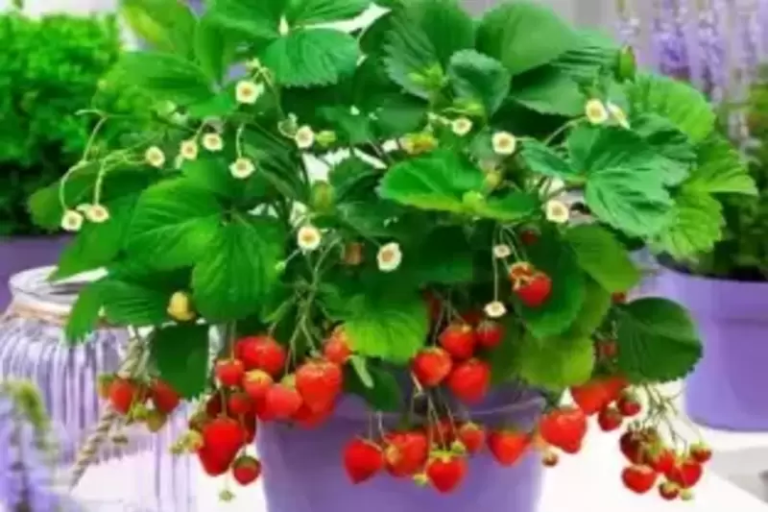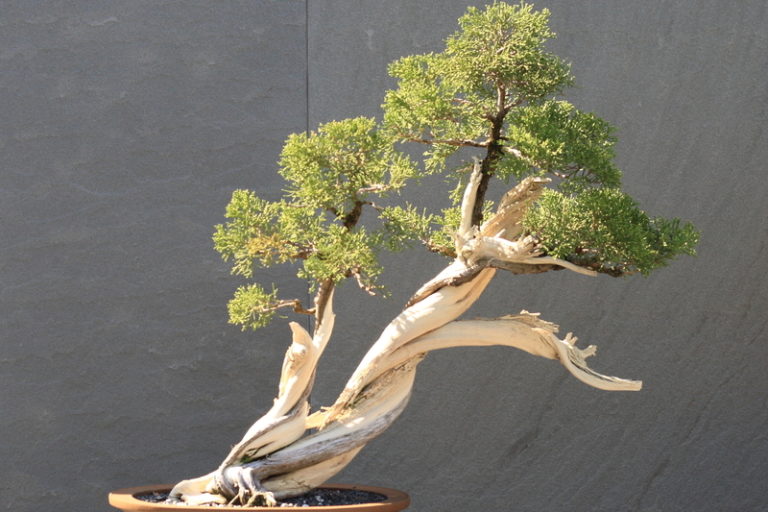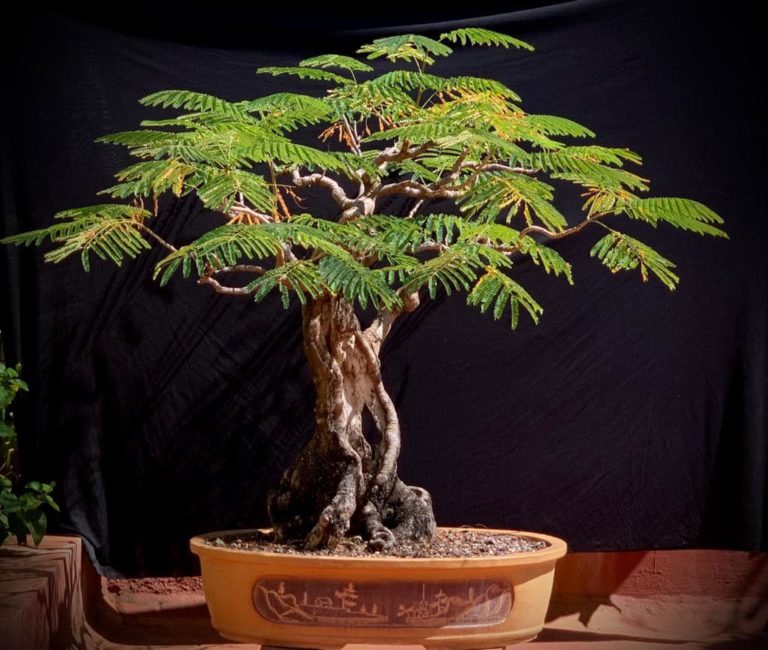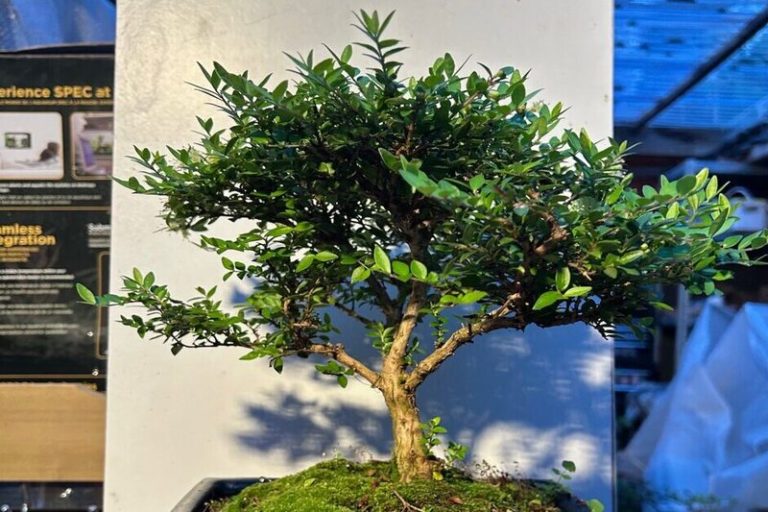Eastern White Cedar Bonsai: A Natural Masterpiece for Your Home
The Eastern White Cedar Bonsai is a type of bonsai tree that is known for its unique beauty and cultural importance. This kind of tree has a long and interesting past that makes it a popular choice for bonsai gardening.
What is an Eastern White Cedar Bonsai?
Eastern White Cedar Bonsai is a bonsai tree made from the Eastern White Cedar, which is a tree that grows naturally in the eastern part of North America. It has soft leaves that look like scales and reddish-brown bark that comes off in thin strips. The tree can be trained and shaped into different bonsai styles, and it does best in soil that drains well, is watered regularly, and gets lots of sun. Eastern White Cedar Bonsai is a popular choice among bonsai fans because it is easy to care for and has a unique look.
History and Origins of the Eastern White Cedar Bonsai
The Eastern White Cedar Bonsai has a long past that goes back to the native Eastern White Cedar tree, which is also called Thuja occidentalis. The Eastern White Cedar is an evergreen tree that is native to eastern North America. It is mostly found in Canada and the northeastern United States.
The Eastern White Cedar has been praised for its beauty and flexibility for a long time, and it has been used in bonsai for hundreds of years. Bonsai is the art of growing small trees in pots. It started in China and then went to Japan, where it became a big part of their culture. As the art of bonsai grew, different kinds of trees were used. One of these was the Eastern White Cedar.
The Eastern White Cedar Bonsai rose to popularity in the world of bonsai during the early to mid-twentieth century. Bonsai lovers and artists began experimenting with many tree species, discovering the unique features and characteristics that each tree might contribute to the art form. The Eastern White Cedar’s beautiful foliage, textured bark, and flexibility make it an appealing choice for bonsai artists.
Over time, Eastern White Cedar Bonsai became widely recognized and appreciated for its distinctive appearance and ability to capture the essence of nature in a miniature form. The tree’s rich history and origins in North America, combined with its integration into the traditional art of bonsai, have contributed to its popularity among bonsai enthusiasts worldwide.
Today, Eastern White Cedar Bonsai continues to be cultivated and admired for its unique beauty and cultural significance. It serves as a testament to the enduring artistry and appreciation of nature that bonsai represents.
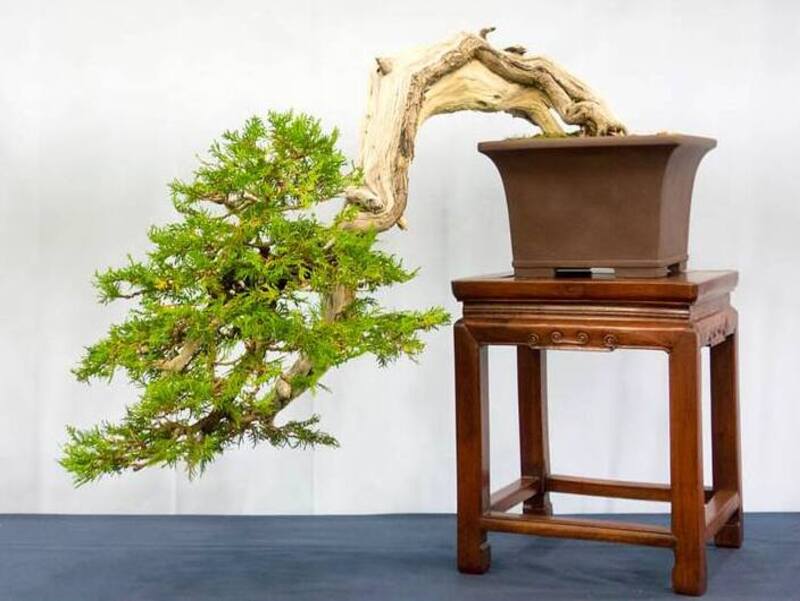
Types of Eastern White Cedar Bonsai
There are several types or styles of Eastern White Cedar Bonsai that can be created through careful cultivation and styling techniques. Here are some common types:
Formal Upright Style: This style involves training the Eastern White Cedar Bonsai to grow vertically in a straight and formal manner. The trunk is upright, and the branches are symmetrically arranged, gradually decreasing in size as they ascend.
Informal Upright Style: In this style, the trunk of the Eastern White Cedar Bonsai has a slight curve or movement, giving it a more natural and informal appearance. The branches are positioned in a less rigid manner, providing a sense of organic growth.
Slanting Style: The slanting Style is characterized by the trunk of the Eastern White Cedar Bonsai growing at an angle, or slant. It creates a dynamic and visually interesting composition, as if the tree is leaning against a strong wind or slope.
Cascade Style: In the Cascade style, the trunk of the Eastern White Cedar Bonsai cascades downward, resembling a tree growing on a cliff or mountainside. The branches and foliage flow downward, creating a sense of movement and drama.
Windswept Style: This style mimics the effect of strong winds shaping the tree’s growth. The branches of the Eastern White Cedar Bonsai are trained to grow predominantly in one direction, as if being pushed by prevailing winds.
Multi-Trunk Style: Multiple trunks are included into the design of the Eastern White Cedar Bonsai in this manner, giving it a forest-like aspect. The trunks may be placed in a variety of ways to create depth and intricacy.
These are just a few examples of the types or styles of Eastern White Cedar Bonsai that can be created. Each style requires careful pruning, wiring, and training techniques to achieve the desired shape and aesthetic. Bonsai enthusiasts can explore and experiment with different styles to bring out the unique beauty of the Eastern White Cedar Bonsai.
Eastern White Cedar Bonsai and its Symbolism
Eastern White Cedar Bonsai holds symbolic meaning that adds to its appeal and significance in bonsai culture. Here are some symbolic representations associated with Eastern White Cedar Bonsai:
- Strength and Endurance: Eastern White Cedar is well-known for its hardiness and capacity to survive adverse weather conditions. It represents power and endurance in bonsai form, reminding us of the significance of resilience and tenacity in the face of adversity.
- Longevity and Wisdom: Bonsai trees are often seen as symbols of longevity and wisdom due to their long lifespan and the wisdom acquired through their careful cultivation. Eastern White Cedar Bonsai, with its enduring nature, represents the wisdom gained over time and the potential for a long, fulfilling life.
- Balance and Harmony: Bonsai, including Eastern White Cedar Bonsai, embodies the concept of balance and harmony between nature and human intervention. It symbolizes the harmonious coexistence between humans and the natural world, emphasizing the need for balance and respect in our interactions with nature.
- Connection to Nature: Bonsai trees, including Eastern White Cedar Bonsai, provide a tangible connection to nature in miniature form. They serve as reminders of our connection to the natural world and the importance of preserving and appreciating its beauty.
- Tranquility and Serenity: Bonsai gardening is frequently connected with a sense of calm and tranquility. With its beautiful form and tranquil presence, Eastern White Cedar Bonsai generates a relaxing effect, encouraging relaxation and inner serenity.
- Symbol of Bonsai Artistry: Eastern White Cedar Bonsai represents the artistry and skill involved in bonsai cultivation. It symbolizes the creativity, patience, and dedication required to transform a tree into a miniature work of art.
These symbolic representations add depth and meaning to the Eastern White Cedar Bonsai, making it not just a visually appealing tree but also a symbol of various virtues and connections to the natural world.
Characteristics of the Eastern White Cedar Bonsai
The Eastern White Cedar Bonsai, derived from the Eastern White Cedar tree (Thuja occidentalis), possesses several distinct characteristics that contribute to its appeal and unique beauty. Here are some key characteristics of the Eastern White Cedar Bonsai:
Foliage: The foliage of the Eastern White Cedar Bonsai consists of soft, scale-like leaves. These leaves are arranged in flattened sprays along the branches, creating a lush and dense foliage mass. The color of the foliage ranges from bright green to a slightly yellowish hue.
Bark: The bark of the Eastern White Cedar Bonsai is reddish-brown in color and possesses an attractive, fibrous texture. As the tree ages, the bark exfoliates in thin, stringy strips, adding visual interest and texture to the bonsai.
Size and Form: Eastern White Cedar Bonsai can be trained and pruned to maintain a smaller size while still retaining the distinctive form of the Eastern White Cedar tree. The bonsai may exhibit a tapered, slender trunk that gradually thickens as it ascends. The branches are typically horizontally layered, creating an elegant and balanced silhouette.
Textured Foliage Mass: The dense foliage mass of the Eastern White Cedar Bonsai creates a visually interesting texture. The scale-like leaves, when viewed collectively, give the appearance of a textured green cushion or pad, further enhancing the overall aesthetic of the tree.
Gnarled and Rugged Trunk: As the Eastern White Cedar Bonsai ages, the trunk develops an intriguing gnarled and rugged texture. This textured trunk adds character and a sense of maturity to the bonsai, evoking the charm of an ancient tree in miniature form.
Adaptability: Eastern White Cedar Bonsai is known for its adaptability to bonsai cultivation. It can tolerate a range of growing conditions and is resilient to various weather conditions, making it suitable for both indoor and outdoor bonsai cultivation.
These characteristics combine to create a visually captivating Eastern White Cedar Bonsai that embodies the beauty of nature in miniature form. The soft foliage, textured bark, and graceful form make it an attractive choice for bonsai enthusiasts and add to the overall charm and appeal of this bonsai tree.
How to Grow an Eastern White Cedar Bonsai
Growing an Eastern White Cedar Bonsai necessitates paying close attention to its specialized requirements and growth practices. The following is a step-by-step approach on growing Eastern White Cedar Bonsai:
Obtaining the Tree: Acquire a healthy Eastern White Cedar tree from a reputable nursery or bonsai supplier. Look for a tree that has a desirable trunk shape and good overall health.
Suitable Pot and Soil: Choose a bonsai pot for the tree that is the right size. Make sure the pot has holes in the bottom so that water can drain out. Use a bonsai soil mix that has both organic and artificial parts, such as pine bark, peat moss, perlite, and pumice. This will help the soil drain well. This will give the roots good air flow and drainage.
Pruning and Shaping: Prune the Eastern White Cedar Bonsai regularly to maintain its desired shape and size. Use bonsai shears to trim excess growth, focusing on maintaining the tree’s natural form. Additionally, wiring can be applied to shape the branches and trunk. Be careful not to wrap the wire too tightly to avoid damaging the tree.
Watering: Eastern White Cedar Bonsai prefers consistently moist but well-drained soil. Water the tree thoroughly when the top layer of the soil feels slightly dry. Avoid overwatering, as it can lead to root rot. Adjust the frequency of watering based on the environmental conditions and the tree’s specific needs.
Sunlight and Temperature: Eastern White Cedar Bonsai thrives in full sunlight. Place the bonsai in a location where it can receive at least six hours of direct sunlight daily. The tree can tolerate colder temperatures, but protection may be necessary during severe frost or freezing conditions.
Fertilizing: Use a balanced, slow-release bonsai fertilizer to provide essential nutrients to the Eastern White Cedar Bonsai. Follow the manufacturer’s instructions regarding application frequency and dosage. Fertilize during the growing season, typically from spring to early autumn, and reduce or stop fertilization during the dormant period in winter.
Repotting: Repot the Eastern White Cedar Bonsai every two to three years, ideally in the early spring before new growth begins. This helps prevent the roots from becoming overcrowded and allows for fresh soil and better root development. Trim back any overly long or tangled roots during repotting.
Protection from Pests and Diseases: Regularly inspect the Eastern White Cedar Bonsai for any signs of pests such as aphids or spider mites. Treat any infestations promptly using appropriate organic or chemical remedies. Additionally, maintain good airflow and avoid overwatering to prevent fungal diseases.
By following these guidelines and providing the necessary care, you can cultivate a healthy and thriving Eastern White Cedar Bonsai that will bring beauty and joy to your bonsai collection.
Benefits of the Eastern White Cedar Bonsai
The Eastern White Cedar Bonsai offers several benefits that make it a popular choice among bonsai enthusiasts. Here are some of the benefits of cultivating an Eastern White Cedar Bonsai:
- Aesthetic Appeal: Eastern White Cedar Bonsai showcases the unique beauty of nature in miniature form. Its soft, scale-like foliage, textured bark, and graceful form create a visually captivating bonsai that adds charm and elegance to any indoor or outdoor space.
- Bonsai Artistry: Growing and Shaping an Eastern White Cedar Bonsai allows bonsai enthusiasts to exercise their creativity and artistic skills. The process of pruning, wiring, and training the tree into various bonsai styles offers a fulfilling and rewarding experience.
- Compact Size: Eastern White Cedar Bonsai, as a small and compact tree, is suitable for bonsai enthusiasts who have limited space or prefer to cultivate bonsai indoors. Its size allows it to be displayed on tabletops, shelves, or small garden areas, bringing the beauty of nature into smaller living spaces.
- Stress Relief: Caring for an Eastern White Cedar Bonsai can provide therapeutic benefits and serve as a stress-relieving activity. The process of tending to the tree, observing its growth, and nurturing its well-being can promote relaxation, mindfulness, and a sense of tranquility.
- Connection to Nature: The Eastern White Cedar Bonsai serves as a tangible connection to nature, even within an urban environment. Its presence can help create a sense of serenity and connection to the natural world, providing a calming influence in our daily lives.
- Symbolism and Meaning: Like all bonsai trees, the Eastern White Cedar Bonsai carries symbolic meanings associated with bonsai culture. It represents qualities such as strength, endurance, balance, and wisdom, adding depth and significance to its presence.
- Education and Learning: Growing and caring for an Eastern White Cedar Bonsai allows bonsai enthusiasts to learn about the specific needs and characteristics of this tree species. It provides an opportunity to deepen one’s understanding of horticulture, bonsai techniques, and the delicate balance required to maintain a healthy bonsai.
These benefits make the Eastern White Cedar Bonsai a captivating and rewarding tree to cultivate, offering both aesthetic enjoyment and personal fulfillment for bonsai enthusiasts of all levels.
Styling and Design of the Eastern White Cedar Bonsai
Styling and designing the Eastern White Cedar Bonsai is an essential part of bonsai cultivation. With careful techniques and considerations, you can create a visually appealing and harmonious composition. Here are some key aspects to consider when styling and designing the Eastern White Cedar Bonsai:
Trunk and Branch Structure: The trunk and branch structure of the Eastern White Cedar Bonsai should exhibit a natural flow and balance. Consider the desired style, such as formal upright, informal upright, or slanting, and shape the trunk and branches accordingly. Aim for a tapered trunk that gradually thickens as it ascends, with branches positioned in a visually pleasing and harmonious manner.
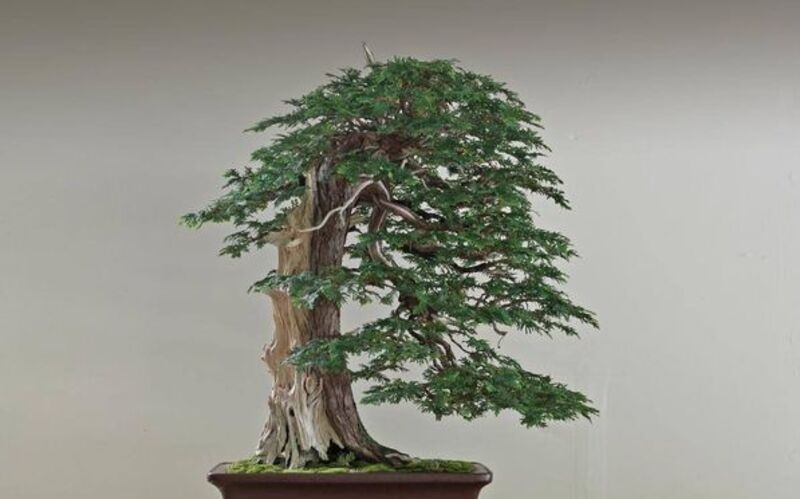
Branch Placement and Direction: Place the branches in a balanced and layered manner, mimicking the growth pattern of a mature tree. Avoid overcrowding branches in one area and create open spaces to allow light penetration and airflow. Consider the overall composition and ensure that branches radiate in different directions, providing a sense of depth and movement.
Pruning and Wiring: Regular pruning is necessary to maintain the desired shape and size of the Eastern White Cedar Bonsai. Use bonsai shears to trim excess growth, focusing on maintaining the tree’s natural form. Wiring can also be employed to guide the branches into the desired positions. Be careful not to wrap the wire too tightly to prevent damage to the tree.
Apical Dominance: Encourage apical dominance by allowing the topmost branch or leader to grow slightly taller and stronger than the lower branches. This technique helps create a sense of upward growth and vitality in the bonsai’s overall design.
Negative Space and Balance: Create visual interest and balance by incorporating negative space into the design. Negative space refers to the open areas within the tree’s structure that enhance the overall composition. Balance the density of foliage with the voids or empty spaces, ensuring a harmonious distribution of mass.
Proportions and Scale: Consider the size and proportions of the Eastern White Cedar Bonsai in relation to the bonsai pot. The tree should be in proportion to the container, with neither element overpowering the other. Additionally, ensure that the overall scale of the bonsai is appropriate for the desired style and the space it will be displayed in.
Patience and Long-term Vision: Styling and designing a bonsai is a gradual process that requires patience and long-term vision. It may take several years for the Eastern White Cedar Bonsai to develop its desired form and maturity. Regular maintenance, pruning, and refinement are necessary to refine the design over time.
By considering these aspects and applying proper techniques, you can create a beautifully styled and designed Eastern White Cedar Bonsai that showcases the natural beauty of the tree in miniature form. Remember to adapt the design to your personal preferences and artistic vision while respecting the inherent characteristics of the Eastern White Cedar species.
How to Care for and Maintain Eastern White Cedar Bonsai
Caring for and maintaining an Eastern White Cedar Bonsai is crucial to ensuring its health and longevity. Here are some essential care tips to keep your Eastern White Cedar Bonsai thriving:
- Watering: Provide consistent moisture to the bonsai by watering it regularly. Check the soil’s moisture level by inserting your finger about an inch into the soil. Water the tree thoroughly when the top layer feels slightly dry. Avoid overwatering, as it can lead to root rot. During hot and dry periods, the tree may require more frequent watering.
- Sunlight: The Eastern White Cedar Bonsai thrives in full sunlight. Place the bonsai in a location where it can receive at least six hours of direct sunlight daily. If you keep the bonsai indoors, place it near a bright window or provide artificial grow lights to ensure it receives adequate light.
- Temperature and Humidity: The Eastern White Cedar Bonsai is cold-hardy and can tolerate a range of temperatures. However, it prefers cooler climates. Protect the bonsai from extreme heat or cold by providing appropriate shelter or moving it indoors during severe weather conditions. Maintain a moderate humidity level around the tree by misting the foliage regularly, especially in drier environments.
- Fertilizing: Feed the Eastern White Cedar Bonsai with a balanced, slow-release bonsai fertilizer during the growing season, typically from spring to early autumn. Follow the instructions provided on the fertilizer package for proper dosage and application frequency. Avoid fertilizing during the dormant period in the winter.
- Pruning and Shaping: Regular pruning is essential to maintaining the desired shape and size of the Eastern White Cedar Bonsai. Remove any dead, damaged, or overgrown branches to promote airflow and maintain the overall health of the tree. Additionally, use wiring techniques to shape the branches and trunk when necessary. Be cautious not to wrap the wire too tightly to avoid causing damage.
- Repotting: Repot the Eastern White Cedar Bonsai every two to three years, ideally in the early spring before new growth begins. Repotting helps refresh the soil, prevent root binding, and promote healthy root development. Trim back any overly long or tangled roots during repotting.
- Pests and Diseases: Regularly inspect the Eastern White Cedar Bonsai for any signs of pests such as aphids, spider mites, or scale insects. Treat any infestations promptly using appropriate organic or chemical remedies. Maintain good airflow and avoid overwatering to prevent fungal diseases.
- Winter Care: White Cedar of the East Although bonsai can endure cold temperatures, they may require protection during heavy frost or freezing conditions. To preserve the bonsai from harsh cold, keep it in a protected position, such as an unheated garage or greenhouse. During the winter, when the tree’s development slows, water sparingly.
You can guarantee that your Eastern White Cedar Bonsai remains healthy, bright, and a source of beauty and delight for years to come by following these maintenance suggestions and routinely assessing the tree’s health.
Eastern White Cedar Bonsai Care Sheet
| Aspect | Care Tips |
| Watering | Water regularly, keeping the soil consistently moist but not waterlogged. |
| Check soil moisture by inserting a finger into the soil to a depth of about an inch. | |
| Sunlight | Place the bonsai in a location with full sunlight, receiving at least six hours of direct sunlight daily. |
| Temperature | Eastern White Cedar Bonsai is cold-hardy, but protect it from extreme heat or cold. |
| Provide shelter or move indoors during severe weather conditions. | |
| Humidity | Maintain moderate humidity by misting the foliage regularly, especially in drier environments. |
| Fertilizing | Feed with a balanced, slow-release bonsai fertilizer during the growing season. |
| Follow instructions on the fertilizer package for proper dosage and application frequency. | |
| Pruning | Regularly prune to maintain shape and remove dead, damaged, or overgrown branches. |
| Repotting | Repot every two to three years during early spring before new growth begins. |
| Trim back overly long or tangled roots and refresh the soil. | |
| Pests and Diseases | Regularly inspect for pests such as aphids, spider mites, or scale insects. |
| Treat infestations promptly using appropriate remedies. | |
| Winter Care | Provide protection during severe frost or freezing conditions. |
| Place in a sheltered location, like an unheated garage or greenhouse. | |
| Water sparingly during the winter months. |
Remember that the care needs of your Eastern White Cedar Bonsai may vary based on your specific climate and growing conditions. It’s important to observe the tree closely and make adjustments to the care routine as needed.
Conclusion
The Eastern White Cedar Bonsai is a captivating tree with rich symbolism and aesthetic appeal. Originating from North America, it offers various styling options and represents strength and wisdom. Caring for the bonsai involves providing adequate sunlight, moderate watering, and maintaining suitable temperature and humidity levels. Regular pruning, wiring, and repotting are necessary for its health. The Eastern White Cedar Bonsai brings the beauty of nature into smaller spaces, offers artistic fulfillment, and promotes relaxation and mindfulness. Follow the care guidelines to enjoy its beauty and tranquility for years to come.
FAQ:
Q: What is an Eastern White Cedar Bonsai?
A: It is a miniature version of the Eastern White Cedar tree, cultivated and trained in the art of bonsai.
Q: How big does an Eastern White Cedar Bonsai grow?
A: Typically, it grows to a height of 12 to 24 inches (30 to 60 cm) when fully mature.
Q: Can Eastern White Cedar Bonsai be grown indoors?
A: It can be grown indoors for short periods but requires ample light and air circulation.
Q: How often should I water my Eastern White Cedar Bonsai?
A: Water regularly to keep the soil consistently moist, avoiding overwatering.
Q: Does the Eastern White Cedar Bonsai require special pruning?
A: Regular pruning is necessary to maintain shape and remove dead or overgrown branches.
Q: When should I repot my Eastern White Cedar Bonsai?
A: Repot every two to three years during the early spring before new growth begins.
Q: What are the common pests and diseases of Eastern White Cedar Bonsai?
A: Pests include aphids, spider mites, and scale insects. Fungal diseases can occur in overly damp conditions.
Q: How does the Eastern White Cedar Bonsai handle winter conditions?
A: It is cold-hardy but may require protection during severe frost or extended freezing.
Q: Can I style Eastern White Cedar Bonsai into different forms?
A: Yes, it can be styled into various bonsai forms using pruning and wiring techniques.
Also Read:



